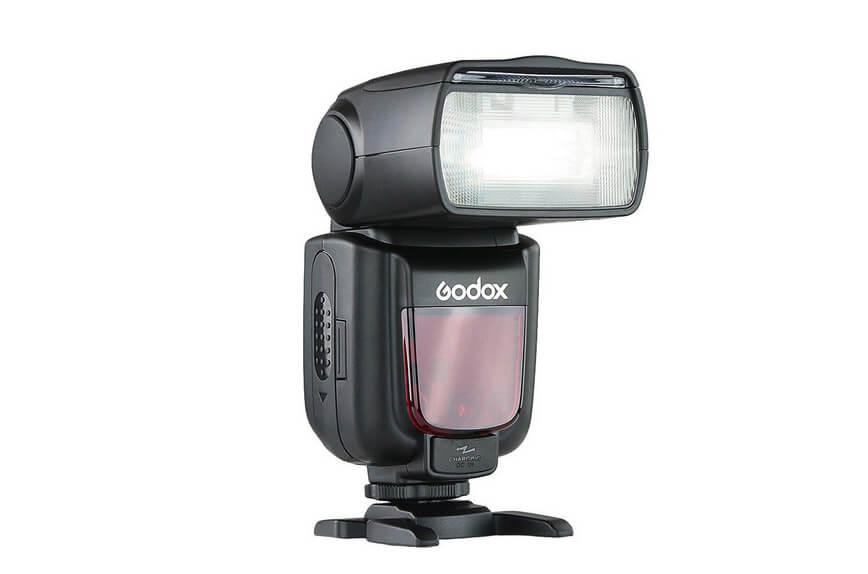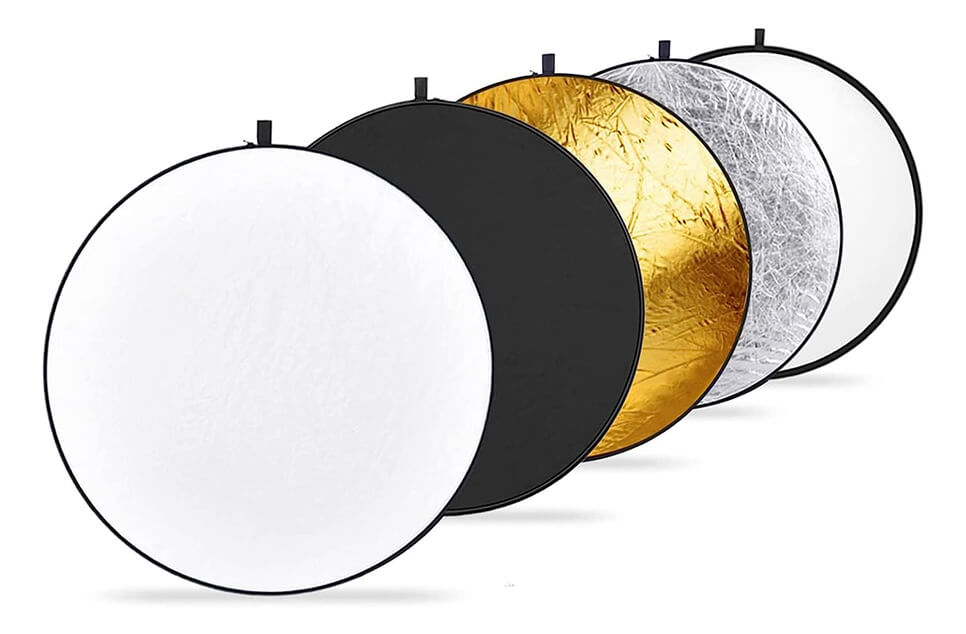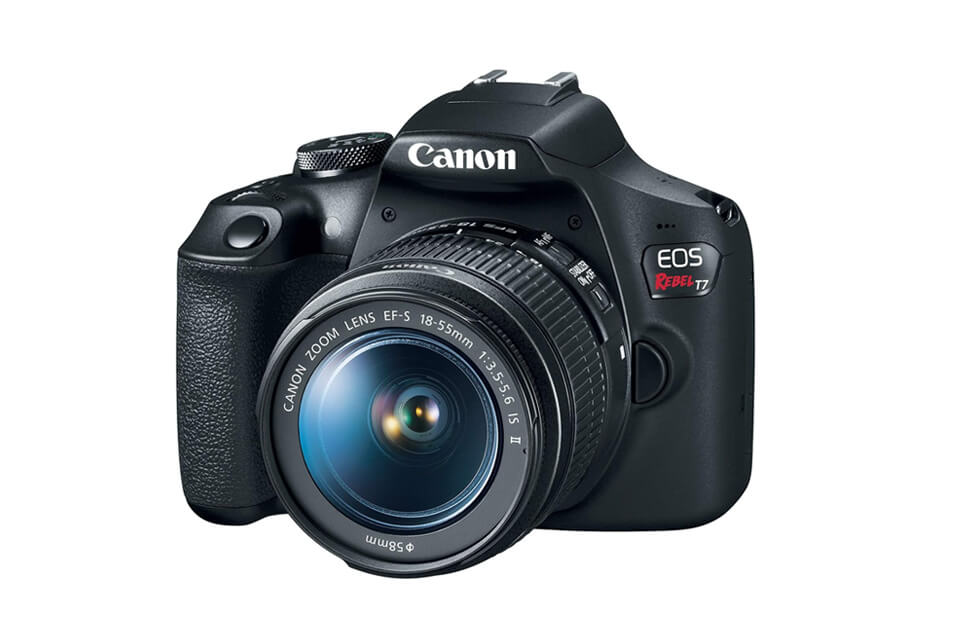You probably just got the Canon Rebel T7 with the kit zoom lens, right?
If you’re a complete beginner, these are the 5 most important accessories that I recommend. Some will make your photography life easier, while others will help you take better pictures.
They aren’t expensive, and work perfectly with the Canon T7. I’ve been shooting with Canon and Sony cameras for more than 10 years, and you can’t go wrong with the items you will see in this guide.
5 Best Accessories for Canon Rebel T7:
- Memory Card – SanDisk Extreme Pro 64GB
- Wireless Flash – Godox TT600
- Cleaning Kit– Altura Camera & Lens Kit
- Reflector – Neewer 5-in-1 Reflector
- Extra Battery – STK LP-E10
If you buy anything after clicking the links that go to Amazon, I may receive a small commission with no extra cost to you.
Looking for lenses? Check out my 6 Best Lenses for Canon Rebel T7 to get in 2024.
1. Memory Card

The best memory card is the SanDisk Extreme Pro 64GB. It’s got plenty of storage and only costs $15.
It’s actually faster than what the Canon T7 needs anyways, which is great news. Your camera has 1 x slot for SD memory cards. This means that any SD, SDHC or SDXC card will work and fit perfectly.
It’s shock-proof and water-proof, and it’s nearly impossible to destroy it. You can actually google countless of stories of SD cards surviving underwater for years and still working normally.
What size to get?
- 32GB or 64GB?
Well, your Canon T7 has a 24 megapixel sensor. This means that the average size of a JPEG image is around 8MB so you can store almost 10 thousand images on a 64GB card.
For many people, this is more than enough for a couple of years without ever deleting a single photo. 64GB is plenty of storage and you can easily travel, shoot weddings, and not run out of storage.
Plus, the SanDisk 64GB card is only $15, whereas the 32GB version is $11. Many people decide to buy 2 x 32GB cards though, in case you want to have separate files for different scenarios. It’s actually quite safe if your memory card fails and you still have one as backup.
You can buy the SanDisk Extreme Pro 64GB at Amazon here.
2. Wireless Flash

Photography is all about light, and getting a ~$50 flash can really make your images more interesting. The Godox TT600 is compatible with almost every DSLR camera (including the Canon T7), works really well and isn’t expensive.
- You can use wirelessly!
- You can mount it directly on the Canon T7
The sky is the limit with flashes, seriously. Once you buy it you’ve got a whole world of new tips and tricks you can learn, and really stand out with your photos. Knowing how to control the light will make your images more professional as well.
Most people put their flashes directly onto the camera, but the light might not look flattering, especially for portraits and product photography.

It’s much better to point the flash upwards, or bounce it from another source (a wall, reflector, etc.). But because this flash is wireless, you can position it pretty much anywhere and get way more creative images. Position it behind your subject for silhouettes, or directly above to create a more natural look.
The Godox TT600 can be used as a master, or a slave flash. What does this mean? You can use multiple flashes and they will all trigger at the same time. It’s got a guide number of 197, which means it’s bright enough to illuminate any subject close to you. It runs on 4 x AA batteries and I seriously recommend you to get rechargeable ones, as you’ll run through them quickly.
A flash is not only for low light and indoors! It can be used outdoors on a sunny day to brighten shadows and get a cleaner, professional look.
You can buy the Godox TT600 at Amazon here.
3. Cleaning Kit

It’s not a question of when, but how often will your gear get dirty. I’m talking about dust on your sensor, sand and dirt on your lenses (the front glass element) and even the LCD screen.
You absolutely need a cleaning kit, and my favorite is the Altura Camera & Lens Kit. It’s got all of the following:
- Microfiber Cloth – For cleaning lenses and rear LCD screen
- Air Blower – For cleaning the sensor and dust
- Sensor Liquid & Swab – For detailed sensor cleaning
- Lens Cleaning Pen – For random particles
Sometimes I have to clean all of my gear at the end of a long photo shoot or travel day. Usually it’s just cleaning the lenses with a microfiber cloth or the brush, but there’s also an uglier part.
When you switch between lenses, your sensor can get dirty!
Your photographs will have dark spots in random places, sometimes ruining the entire shot (Photoshop helps but not for every subject). It’s much better to have the sensor liquid & swab ready, and cleaning your sensor is very easy.
First you remove the lens and point your camera downwards. You use the air blower to try and remove some dust parts, then mount the lens back on and try taking a couple of pictures. If it’s still dirty, you put 1-2 drops of sensor liquid on the swab and gently swipe left and right over the sensor. Voila!
Here’s a useful Youtube video that shows how easy this is. You can’t damage your sensor, and I guarantee you there will come a time when you will need to know this.
If you already have a microfiber cloth and an air blower, you don’t really need this kit and should only purchase the sensor liquid & swab separately.
You can buy the Altura Cleaning Kit at Amazon here.
4. Collapsible 5-in-1 Reflector

This is the best accessory for the price, hands down. The Neewer 5-in-1 Reflector allows you to basically always have 5 different colored surfaces to reflect the light.
Combined with the Godox flash, you are ready to shoot portraits, headshots, pets, you name it.
It’s super lightweight and easy to fold/carry around.
- Gold – To reflect warm light (great for portraits)
- Silver – To reflect light
- White – To bounce/reflect light but softer
- Black – To block/shape light more precicesly
- Translucent – To diffuse light
When extended, this reflector is around 40 inches in diameter, making it perfect for bouncing a lot of light evenly.
Due to its size, it’s recommended that you’ve got a friend or an assistant to help you hold it while shooting. You can do it alone though, or get a cheap light stand.
A reflector like this is great for outdoor portraits, on cloudy and sunny days. You can bounce some warm, gold light onto your subject’s face, or use the white part to diffuse the light.
You can buy the Neewer 5-in-1 Reflector at Amazon here.
5. Extra Battery or Continuous Power

An extra battery is always recommended, but the official one from Canon is not that cheap. That’s why I recommend the STK LP-E10, it works perfectly and won’t damage your camera.
For serious events (concerts, weddings, paid gigs) your battery will most likely drain out after a whole day of shooting. Many professional photographers have a bunch of batteries, so I recommend you to have at least 2. More than that is not necessary, as the Canon T7’s battery life is quite good.
A lot of people might dislike the idea of buying third-party chargers and batteries, but I’ve bought so many of them for Canon/Sony cameras and never had any issues (not to mention how much money did I save).
And here’s a charger for non-stop video recording.
Want to record long videos but your batteries always run out?
If you want to get rid of this problem, simply get a continuous power supply like the TKDY ACK-E10 for Canon. You plug in a dummy battery that has a power cable attached to it and that’s it! It’s like plugging your camera directly into the wall.
This is great for longer videos (sports, presentations) as well as long studio sessions where you don’t want to change batteries all the time.
Canon Rebel T7: My Other Guides
Here are a couple of my other guides to help you.
- If you want to see what lenses I recommend for the Canon Rebel T7, here’s a list of my 6 Best Lenses for Canon Rebel T7 in 2024.
- If you don’t own the T7 yet, here’s a list of the Canon Rebel T7 Bundles I Recommend.
- Want to take better pictures? Learn how your camera works and read my Ultimate Shutter Speed Tutorial for Beginners.
- Learn about ISO and how it affects your image (with examples). Here is my The Ultimate ISO Guide – 5 Tips for Beginners.


